 Facebook
Facebook
 X
X
 Instagram
Instagram
 TikTok
TikTok
 Youtube
Youtube
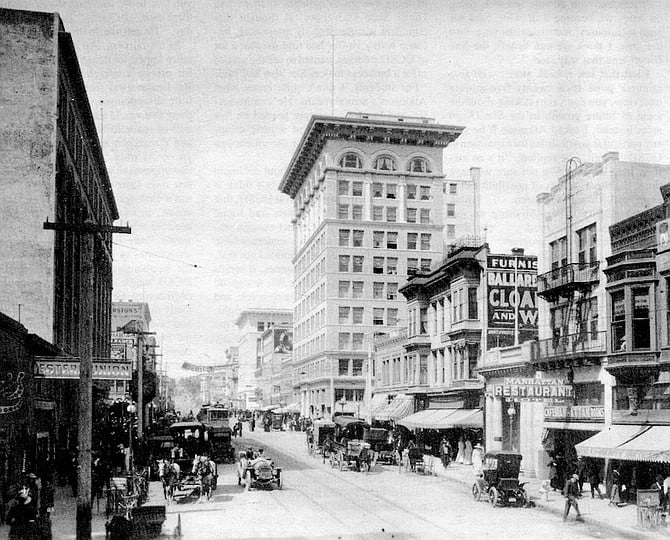
“During the war, film was rationed and there were many prohibitions placed on photographers for security reasons, so a general lack of photographic material from that time is to be expected. That’s when portraits became, instead of the least popular photographic form, the most popular. But there didn’t seem to be any photographs of victory celebrations and that seemed very strange. Then just recently we got some photos of V-J Day — sailors throwing each other into the fountain in Horton Plaza.”
By Amy Chu, Nov. 13, 1980 | Read full article
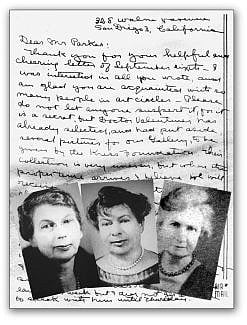
The Spanish Civil War and the beginning of World War II in Europe liquefied the art market. Old Masters of quality became available at reasonable prices. Anne and Amy began to buy. Their early gifts concentrated on Spanish, Netherlandish, and Italian canvases, the Spanish as a nod to their adopted hometown’s Spanish colonial past., L.A. Times art editor William Wilson: “The Putnams made such impossible acquisitions as Goya’s Marqués de Sofraga and Sanchez Cotán’s Quince, Cabbage, Melon, and Cucumber.”
By Judith Moore, Jan. 31, 1985 | Read full article

Some actors are annoyed by directors who crowd them with examples. One is Deb Smyth, who had her share of run-ins with Bob soon after she joined Lambs Players in 1979. "She was one of those actors who comes out of college director-proof," he said. But they worked it out, Bob said, and had a respectful, we're-both-pros relationship before they became friends, and that friendship later led them into marriage.
By Joe Applegate, Mar. 15, 1990 | Read full article
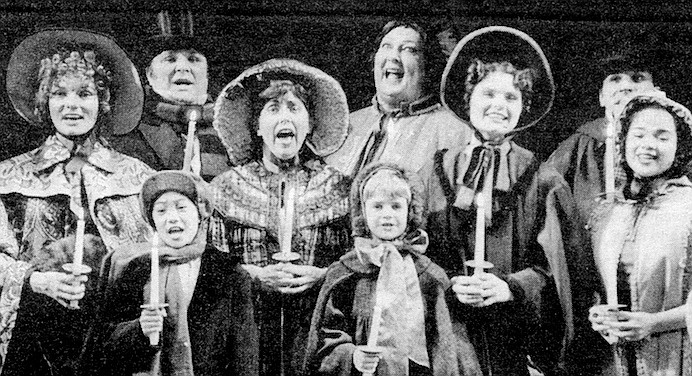
Following the disastrous ’88-’89 season, recalled Allsbrook, “We became acutely aware that the Rep’s financial position was precarious. We heard from vendors who weren’t being paid and saw problems with payroll. The Rep came to us for an advance [on its management fee], but the board took a very tough stand, saying that it did not exist to solve the Rep’s problems.”
Since then, the board has met every two months and looks over financial statements.
By Denise Carabet, May 2, 1996 | Read full article
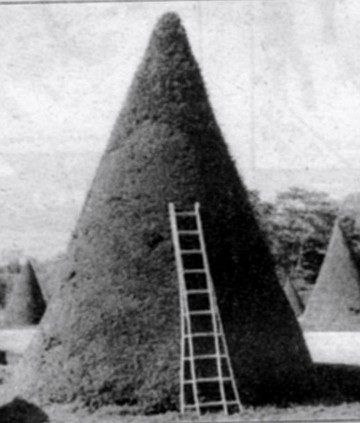
MoPA and Ollman also cultivate collectors. "There were no collectors here when I moved here, that I knew of. Once we started exhibiting, getting an audience, some people get interested in collecting." The museum hosts occasional public programs such as "The Art of Collecting" lecture held in May 1997. A collector's group pays membership fees that go to the museum. The group makes outings, such as a recent one to a Women in Photography exhibit in Santa Barbara.
By Douglas Whyknott, Oct. 16, 1997 | Read full article
“In San Diego, the most important piece of architecture is, of course, the Mission San Luis Rey. But I feel strongly that this [the Oceanside museum] is the next most important piece.” The building began life as Oceanside’s City Hall; later it became its public library. Since the museum moved in, four years ago, the interior has undergone an extensive renovation. Completed in 1997, it received an orchid in San Diego’s annual Orchids and Onions competition for architectural excellence.
By Jeanne Schinto, May 25, 2000 | Read full article

Jan Hicks Manos: "This is the closest we've ever gotten to including nonprofits in a plan for restoring the Balboa." Manos's grandfather, Robert Ernest Hicks, built several theaters, including the Balboa, to create a performing-arts district downtown. During the 1980s, the city destroyed much of Hicks's life's work, including the Plaza and Cabrillo theaters, to make way for Horton Plaza shopping center. Other historic theaters downtown, including the Fisher Opera House, Orpheum, Savoy, and the old Lyceum toppled under the wrecking ball for redevelopment.
By Suzy Hagstrom, June 1, 2000 | Read full article
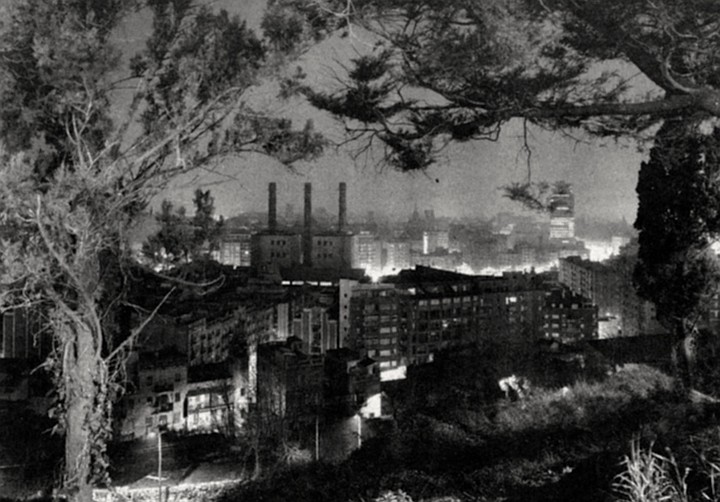
Arthur said, ‘Come to San Diego. We’re going to open a museum in a couple of months.’ I thought it was a great idea. A museum devoted to photography was still unusual.” Most other venues were merely departments of various museums of art. “And those departments would have been in the cellar. And I said, ‘Sounds good to me.’ So I was an intern, helped him open up the museum, and have been here [in San Diego] ever since.”
By Jeanne Schinto, May 3, 2001 | Read full article

In September, a story under the byline of art critic Pincus revealed that the depot project would be financed by a $5 million donation from Qualcomm founder Irwin Jacobs and his wife Joan -- along with $4.75 million more from a group of donors including Pauline Foster. "We've traveled with Hugh [Davies] and seen how similar spaces have led to great creativity by artists," Joan Jacobs was quoted as saying.
By Matt Potter, Nov. 21, 2002 | Read full article


“During the war, film was rationed and there were many prohibitions placed on photographers for security reasons, so a general lack of photographic material from that time is to be expected. That’s when portraits became, instead of the least popular photographic form, the most popular. But there didn’t seem to be any photographs of victory celebrations and that seemed very strange. Then just recently we got some photos of V-J Day — sailors throwing each other into the fountain in Horton Plaza.”
By Amy Chu, Nov. 13, 1980 | Read full article

The Spanish Civil War and the beginning of World War II in Europe liquefied the art market. Old Masters of quality became available at reasonable prices. Anne and Amy began to buy. Their early gifts concentrated on Spanish, Netherlandish, and Italian canvases, the Spanish as a nod to their adopted hometown’s Spanish colonial past., L.A. Times art editor William Wilson: “The Putnams made such impossible acquisitions as Goya’s Marqués de Sofraga and Sanchez Cotán’s Quince, Cabbage, Melon, and Cucumber.”
By Judith Moore, Jan. 31, 1985 | Read full article

Some actors are annoyed by directors who crowd them with examples. One is Deb Smyth, who had her share of run-ins with Bob soon after she joined Lambs Players in 1979. "She was one of those actors who comes out of college director-proof," he said. But they worked it out, Bob said, and had a respectful, we're-both-pros relationship before they became friends, and that friendship later led them into marriage.
By Joe Applegate, Mar. 15, 1990 | Read full article

Following the disastrous ’88-’89 season, recalled Allsbrook, “We became acutely aware that the Rep’s financial position was precarious. We heard from vendors who weren’t being paid and saw problems with payroll. The Rep came to us for an advance [on its management fee], but the board took a very tough stand, saying that it did not exist to solve the Rep’s problems.”
Since then, the board has met every two months and looks over financial statements.
By Denise Carabet, May 2, 1996 | Read full article

MoPA and Ollman also cultivate collectors. "There were no collectors here when I moved here, that I knew of. Once we started exhibiting, getting an audience, some people get interested in collecting." The museum hosts occasional public programs such as "The Art of Collecting" lecture held in May 1997. A collector's group pays membership fees that go to the museum. The group makes outings, such as a recent one to a Women in Photography exhibit in Santa Barbara.
By Douglas Whyknott, Oct. 16, 1997 | Read full article
“In San Diego, the most important piece of architecture is, of course, the Mission San Luis Rey. But I feel strongly that this [the Oceanside museum] is the next most important piece.” The building began life as Oceanside’s City Hall; later it became its public library. Since the museum moved in, four years ago, the interior has undergone an extensive renovation. Completed in 1997, it received an orchid in San Diego’s annual Orchids and Onions competition for architectural excellence.
By Jeanne Schinto, May 25, 2000 | Read full article

Jan Hicks Manos: "This is the closest we've ever gotten to including nonprofits in a plan for restoring the Balboa." Manos's grandfather, Robert Ernest Hicks, built several theaters, including the Balboa, to create a performing-arts district downtown. During the 1980s, the city destroyed much of Hicks's life's work, including the Plaza and Cabrillo theaters, to make way for Horton Plaza shopping center. Other historic theaters downtown, including the Fisher Opera House, Orpheum, Savoy, and the old Lyceum toppled under the wrecking ball for redevelopment.
By Suzy Hagstrom, June 1, 2000 | Read full article

Arthur said, ‘Come to San Diego. We’re going to open a museum in a couple of months.’ I thought it was a great idea. A museum devoted to photography was still unusual.” Most other venues were merely departments of various museums of art. “And those departments would have been in the cellar. And I said, ‘Sounds good to me.’ So I was an intern, helped him open up the museum, and have been here [in San Diego] ever since.”
By Jeanne Schinto, May 3, 2001 | Read full article

In September, a story under the byline of art critic Pincus revealed that the depot project would be financed by a $5 million donation from Qualcomm founder Irwin Jacobs and his wife Joan -- along with $4.75 million more from a group of donors including Pauline Foster. "We've traveled with Hugh [Davies] and seen how similar spaces have led to great creativity by artists," Joan Jacobs was quoted as saying.
By Matt Potter, Nov. 21, 2002 | Read full article
Comments